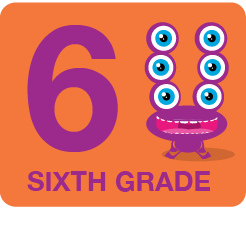This engaging worksheet involves a scenario where students assist Finn at a merchandise booth. Designed for sixth and seventh graders, the worksheet provides practice in calculating unit prices and applying a 200% markup. The exercise is suitable for lessons covering unit rates. To calculate the unit price, you need to determine how much one item or unit of something costs. You do this by dividing the total price by the number of items or units you have.
To find the unit price, you need to figure out how much one item costs when you know the total cost for a bunch of them. Imagine you have 25 color t-shirts with logos that together cost $225. To determine how much one t-shirt costs, divide the total cost ($225) by the number of t-shirts (25). So, $225 ÷ 25 = $9. That's the unit price or the cost of one T-shirt. If you want to sell each t-shirt for a 200% profit, multiply the unit price by 3 (since you want the price plus twice more for profit): $9 x 3 = $27. So, to make a 200% profit, you would sell each t-shirt for $27.
Calculating Unit Prices - Understanding Item Pricing at the Merchandise Stand
Additional Educational Resources:
Percents Large Workbook - (Grade 6)
Rates and Speed Large Workbook - (Grade 6)
Quick Assessment - Pieces of 100 Percent Adventure: Mastering Percents, Decimals & Fractions
Calculating the Area of a Triangle
Calculating Areas: Finding the Area of a Triangle
Solving for Missing Sides Using Pythagorean Theorem: A Geometry Exercise
Operation Integers: Number Lines and Opposites
Mastering Ratios: Completing and Identifying Equivalent Ratios
Barn Exterior Perimeter Calculation with Doors, Windows, and Other Details
Calculating Unit Prices - Understanding Item Pricing at the Merchandise Stand
GRADES:


Additional Educational Resources:
Percents Large Workbook - (Grade 6)
Rates and Speed Large Workbook - (Grade 6)
Quick Assessment - Pieces of 100 Percent Adventure: Mastering Percents, Decimals & Fractions
Calculating the Area of a Triangle
Calculating Areas: Finding the Area of a Triangle
Solving for Missing Sides Using Pythagorean Theorem: A Geometry Exercise
Operation Integers: Number Lines and Opposites
Mastering Ratios: Completing and Identifying Equivalent Ratios
Barn Exterior Perimeter Calculation with Doors, Windows, and Other Details

